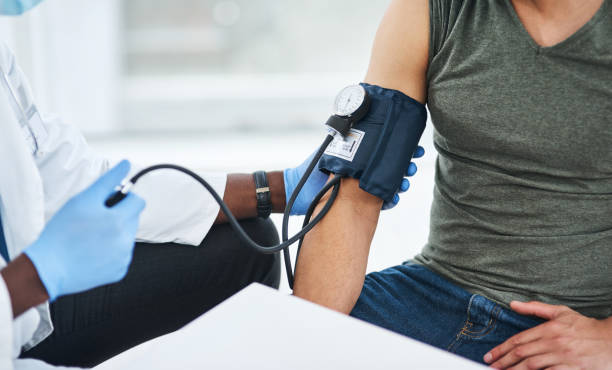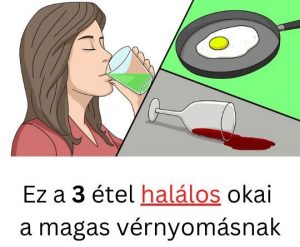The #1 Rated Blood Sugar Formula
Updated Diagnosis and Treatment for Low Blood Pressure

Diagnosis
To diagnose low blood pressure (hypotension), your health care provider will do a physical exam and ask questions about your medical history. The exam includes measuring blood pressure.Tests
Other tests may be done to determine the cause of low blood pressure.- Blood tests. Blood tests can help diagnose low blood sugar (hypoglycemia), high blood sugar (hyperglycemia or diabetes) or a low red blood cell count (anemia), all of which can lower blood pressure.
- Electrocardiogram (ECG or EKG). This quick and painless test measures the electrical activity of the heart. During an ECG, sensors (electrodes) are attached to the chest and sometimes to the arms or legs. Wires attached to the sensors connect to a machine that displays or prints out results. An ECG shows how fast or slow the heart is beating. It can be used to diagnose a current or previous heart attack.
- Tilt table test. A tilt table test can evaluate how the body reacts to changes in position. The test involves lying on a table that's tilted to raise the upper part of the body, which mimics the movement from horizontal to a standing position. Straps hold the body in place. Heart rate and blood pressure are monitored during the test.
Treatment
Low blood pressure (hypotension) without symptoms or with only mild symptoms rarely requires treatment. If low blood pressure is causing symptoms, the treatment depends on the cause. For instance, if medication causes low blood pressure, your health care provider may recommend changing or stopping the medication or lowering the dose. Don't change or stop taking your medication without first talking to your care provider. If it's not clear what's causing low blood pressure or no treatment exists, the goal is to raise blood pressure and reduce symptoms. Depending on age, health and the type of low blood pressure, there are several ways to do this:- Use more salt. Experts usually recommend limiting salt (sodium) because it can raise blood pressure, sometimes dramatically. For people with low blood pressure, however, that can be a good thing. But too much sodium can lead to heart failure, especially in older adults. So it's important to check with a health care provider before increasing salt.
- Drink more water. Fluids increase blood volume and help prevent dehydration, both of which are important in treating hypotension.
- Wear compression stockings. Also called support stockings, these elastic stockings are commonly used to relieve the pain and swelling of varicose veins. They improve blood flow from the legs to the heart. Some people tolerate elastic abdominal binders better than they do compression stockings.
- Medications. Several drugs are available to treat low blood pressure that occurs when standing up (orthostatic hypotension). For example, the drug fludrocortisone boosts blood volume. It's often used to treat orthostatic hypotension. If you have long-term (chronic) orthostatic hypotension, midodrine (Orvaten) may be prescribed to raise standing blood pressure levels. This drug reduces the ability of the blood vessels to expand, which raises blood pressure.
Lifestyle and home remedies
Depending on the reason for low blood pressure, the following steps might help reduce or prevent symptoms.- Drink more water, less alcohol. Alcohol is dehydrating and can lower blood pressure, even if drinking in moderation. Water increases the amount of blood in the body and prevents dehydration.
- Pay attention to body positions. Gently move from lying flat or squatting to a standing position. Don't sit with legs crossed. If symptoms of low blood pressure begin while standing, cross the thighs like a pair of scissors and squeeze. Or put one foot on a ledge or chair and lean as far forward as possible. These moves encourage blood flow from the legs to the heart.
- Eat small, low-carb meals. To help prevent blood pressure from dropping sharply after meals, eat small meals several times a day. Limit high-carbohydrate foods such as potatoes, rice, pasta and bread. A health care provider also might recommend drinking one or two strong cups of caffeinated coffee or tea with breakfast. Caffeine can cause dehydration, however, so be sure to drink plenty of water and other fluids without caffeine.
- Exercise regularly. As a general goal, aim for at least 30 minutes of moderate physical activity every day. Avoid exercising in hot, humid conditions.
Preparing for your appointment
No special preparations are necessary to have your blood pressure checked. Don't stop taking medications you think might affect your blood pressure without a health care provider's advice. Here's some information to help you get ready for your appointment.What you can do
Make a list of:- Symptoms, including any that seem unrelated to low blood pressure, and when they occur
- Key personal information, including a family history of low blood pressure and major stresses or recent life changes
- All medications, vitamins or other supplements you take, including doses
- Questions to ask your provider
- What is likely causing my symptoms or condition?
- What are other possible causes?
- What tests will I need?
- What's the most appropriate treatment?
- How often should I be screened for low blood pressure?
- I have other health conditions. How can I best manage them together?
- Are there restrictions I need to follow?
- Should I see a specialist?
- Are there brochures or other printed materials I can have? What websites do you recommend?
What to expect from your doctor
Your provider is likely to ask you questions, including:- Do you always have symptoms of low blood pressure, or do they come and go?
- How severe are your symptoms?
- What, if anything, seems to improve your symptoms?
- What, if anything, appears to worsen your symptoms?
- Do you have a family history of heart disease?
A sudden fall in blood pressure can be dangerous. A change of just 20 mm Hg — a drop from 110 mm Hg systolic to 90 mm Hg systolic, for example — can cause dizziness and fainting. And big drops, such as those caused by uncontrolled bleeding, severe infections or allergic reactions, can be life-threatening.
Low blood pressure is also known as hypotension. People with a reading of around 90/60, or less, are commonly regarded as having low blood pressure. Some people who have low blood pressure experience symptoms as a result of it. There may be an underlying cause that could need treatment.






